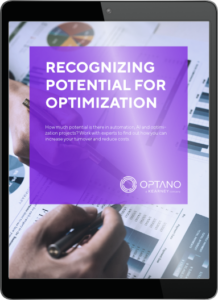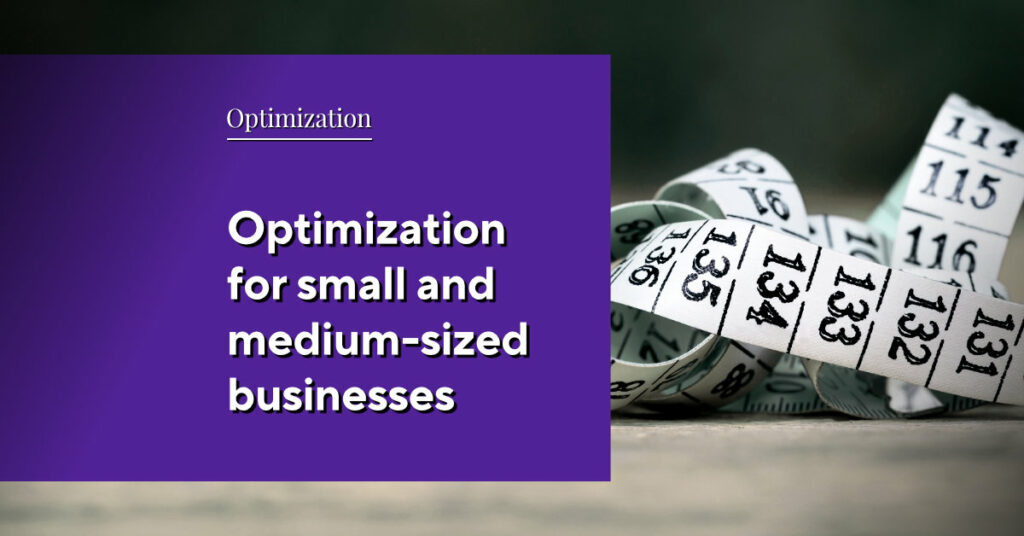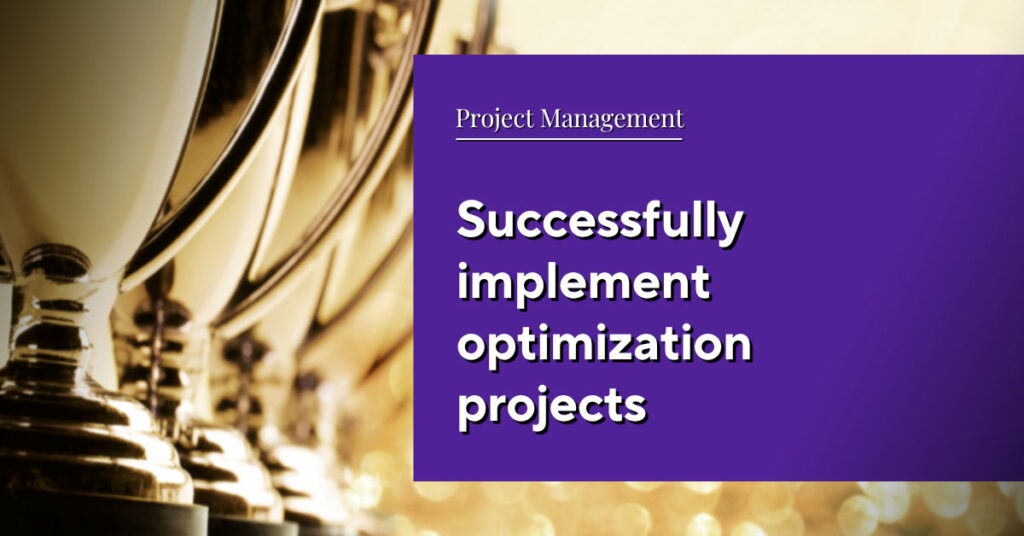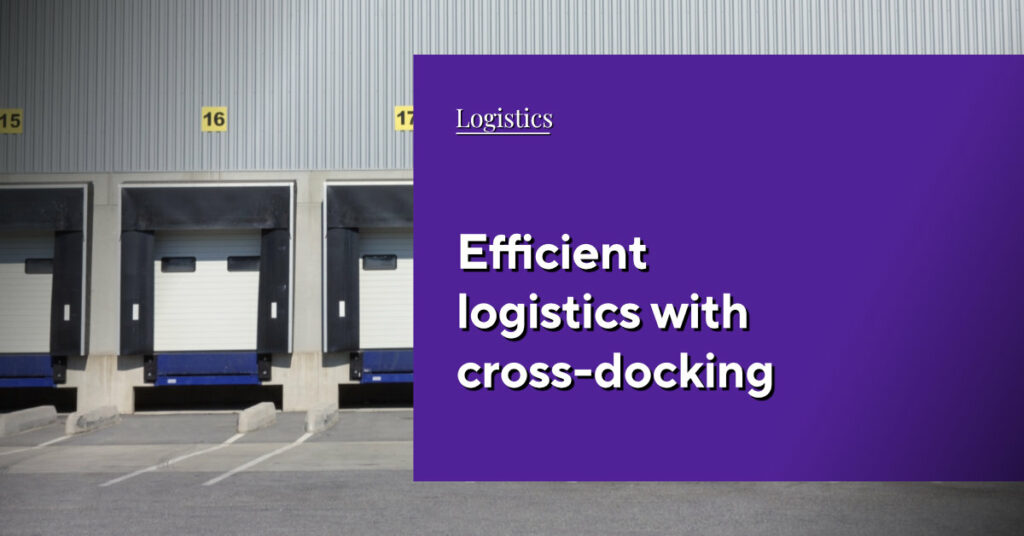The added value of data:
Why it's worth conquering the data mountain
In our podcast series “Optcast” (in German only), Dr. Timo Klerx (paiqo) and Dr. Sven Flake (OPTANO GmbH) discussed the topic of “Making data usable in companies with AI and mathematics”. However, before artificial intelligence, machine learning or mathematical methods such as operations research can be used, the data that is to be used must be processed. This is a complex topic for many companies and unfortunately often a major hurdle.
The two experts use a nice image for this in the podcast: a company’s data as a huge mountain that needs to be conquered. One thing also becomes clear in their conversation: it is definitely worth tackling the climb. Sometimes only part of the mountain needs to be climbed. Other times it makes sense to set up an intermediate camp.
Because one thing is clear in any case: only with well-prepared and validated data can optimal analysis results be achieved when using AI, ML or – as in our case – mathematical optimization methods. Find out how we can help you on your way to the top in this article.
Data is the new gold – recognizing the potential of data
Data is often referred to as the new gold or oil. As an ever-present topic in the media, its potential is well known. It is often referred to as the strategic capital of companies. The way companies handle their own data therefore has a major influence on their economic activity and also on their competitiveness.
But why do so many companies shy away from the task of collecting and processing data when the added value is well known?
Inefficiencies and problems force action
As long as business is running smoothly, i.e. there are no inefficiencies or production and sales problems, many companies do not see the need to deal with the topic of “data and data preparation”. After all, well-structured data collection and preparation naturally involves investment – both in terms of time and money.
However, data and its preparation become an important topic for every company at the latest when decisions have to be made that have a major impact on a company’s profitability.
No valid results and decisions without data preparation
Data processing and preparation is about being able to use the data for analysis purposes. This includes predictive and prescriptive analysis as a form of advanced analytics, but also the use of machine learning (ML), artificial intelligence (AI) and operations research (OR). What these methods have in common is that they generally require the processing and preparation of large volumes of data.
The purpose of data preparation is therefore to ensure that the data used is accurate and consistent. This is the only way to ensure that the analysis delivers valid results and that usable findings and information can be obtained for decision-making. Excellent data quality is therefore highly relevant for operationalized decisions – i.e. the form of decision support using analysis methods.
Data quality as a decisive factor
There are many reasons for poor data quality. Starting with the lack of data. Sometimes “only” individual data records are missing, but often the data was simply not collected because it did not appear to be relevant. Data can also be incorrect, incomplete or defective. Or they are available in different formats – often in simple tables in Excel files, sometimes only as an image format. In view of the many adversities, collecting and preparing data seems to be a task for Sisyphus. In order not to be discouraged and to develop an appropriate mindset, a goal is needed. And it shouldn’t be the mountain top.
Taking the plunge and setting up a training camp
Just as Mount Everest cannot be climbed in a single day, the data mountain should also be tackled in stages and “trained” with a small amount of data. To do this, you should ask yourself the question “Which data is relatively easy to generate added value with?”. An easily accessible mountain pasture with a good view can be a suitable intermediate destination to set up a training camp. In our case, we are talking about a promising use case instead of a mountain pasture and the following questions arise for this first stage:
- How can the use case be applied to the data so that added value is generated?
- What data is already available?
- What data may still be needed to achieve good results?
- Where does the missing data come from?
With the help of this first successful use case, you can learn what possibilities data creates and what potential it holds. In this way, great insights can be gained with relatively little effort.
From training data to large amounts of data
The training with a small, manageable amount of data has been completed and a successfully implemented use case has clearly demonstrated the added value of data preparation. The first quick wins have therefore been achieved. What’s next for data preparation?
The process of data preparation consists of various more or less complex steps and the aim is to automate it in order to reduce the effort required for data management and to be able to use analysis tools easily.
During data cleansing, data errors, inconsistencies and anomalies are corrected in order to obtain complete and correct data sets.
In the data transformation and enrichment step, the data is adapted to meet the analysis requirements. For example, data stored in various data formats must be converted into a standardized format that can be used for analysis.During data enrichment, data sets are further improved by expanding and adding data as required.
Data validation involves running automated routines on the data to check it for consistency, completeness and accuracy.
Advantages of (automated) data preparation
An effective process for data preparation therefore offers many advantages, including the availability of the necessary data:
- Informed decision-making with the help of data
- Ensuring that the results of analytical methods provide valid results
- Eliminating data problems and errors
Automated data preparation can also be carried out quickly, reducing costs and time for data management so that the focus can be placed on data analysis.
More interesting articles
Using the potential of data – with OPTANO
From the perspective of operations research experts, data preparation is essential. Without consistent and accurate data, the optimization model cannot deliver valid results, which are essential for decision-making. That’s why we support you with data preparation. You can find out how we do this here.
OPTANO - define your goals with our team
OPTANO projects usually start with a workshop in which specific case studies and data are discussed. This includes a projection of what automatic data processing, cleansing and aggregation can do for your company. This makes the data potential tangible.
While we talk about your company’s pain points, we also always address the topic of data: What data is needed to eliminate inefficiencies? What data is available? Where does additional data that is needed come from?
Our project managers, who have already gained a lot of experience in a wide range of industries, will help you to identify the relevant data. If this data is not available in a processable form, we will prepare it. Here too, our customers benefit from the experience of the OPTANO team.
Gaining information and insights from data
As optimization software, OPTANO enables the analysis and representation of data as a model. In some cases, we first create a quick prototype in the form of an MVP (Minimum Viable Product). This allows you to see what your optimization will look like at this early stage. All we need is a data dump. Of course, validation is carried out to ensure that the results are displayed correctly.
Mathematical optimization methods can be used to take a variety of different objectives into account and resolve conflicting objectives. Our powerful algorithms always calculate the best possible result from millions and millions of possibilities – if the data is correct. This is the only way you can be sure of making the best decision.
Hail the mountain
Climbing the data mountain undoubtedly has a high added value for your company’s decision-making. But even smaller stages always mean a gain. And with a little help from experts, you can even reach the top of the mountain. With this in mind: all hail the mountain!
Do you also have potential for optimization?
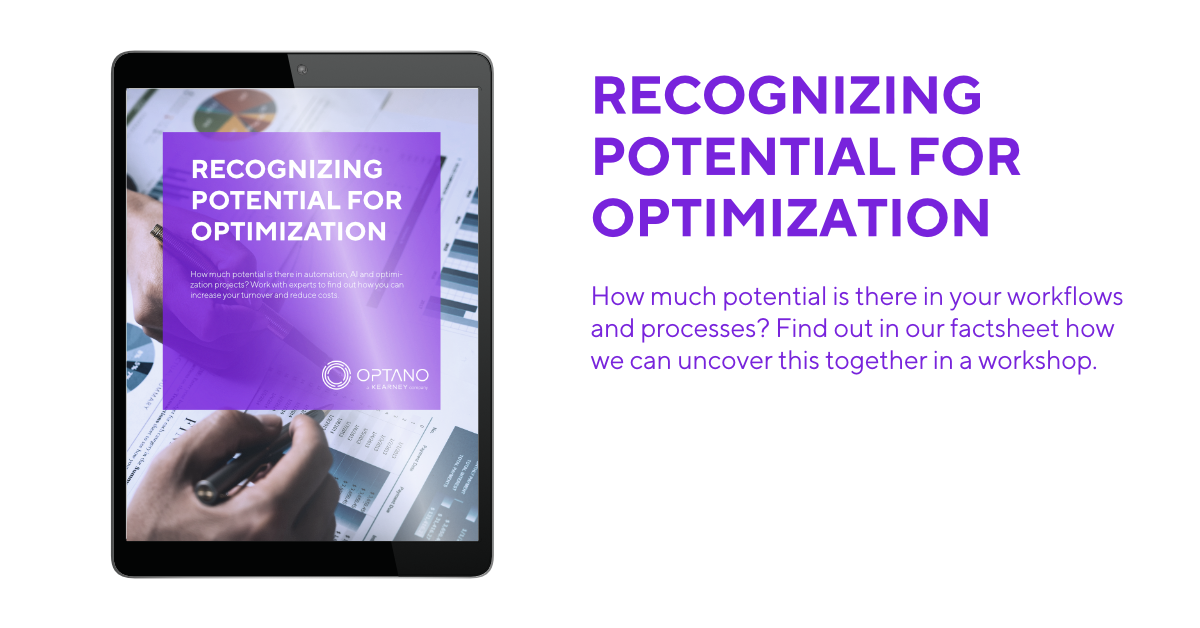
There is potential for optimization in almost every company. But where is the best place to start? Where can the quickest or greatest savings be made? We offer a workshop to get to the bottom of precisely these questions. Find out the details in our factsheet.
To obtain our factsheet, all you need to do is enter your contact details in the space below. A pop-up window will then open to download the whitepaper. Please note that by providing us with your email address, you agree that we may contact you on this topic. You may revoke this agreement at any time by contacting [email protected].

